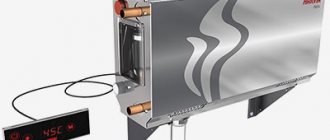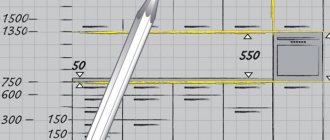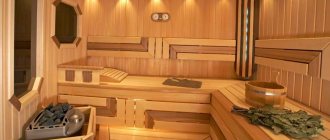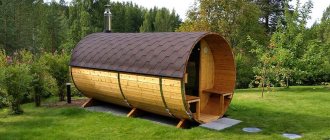Basic principles
What temperature should the refrigerator and freezer be?
- The ideal overall refrigerator temperature should be between +3 and +5°C.
- The freezer must maintain a temperature of -18° C or lower.
- In the freshness zone (if there is one), set the temperature to about 0-1° C.
After adjusting the thermostat, the desired climate will be established in 6-8 hours
These standards are suitable for storing most products, but still not for all - some supplies need to be stored at zero temperature, while others need to be stored at 5-10 degrees Celsius. Moreover, in different zones of the chamber the cold is distributed differently, despite the given general mode. Somewhere the climate is warmer, and somewhere noticeably colder.
So it turns out that even after adjusting the thermostat correctly, we can find milk with ice in the refrigerator, unexpectedly rotten eggs or lettuce leaves that for some reason have turned into a jelly-like slurry.
Of course, the average consumer does not need to know the intricacies of storage conditions for all types of products, but there are some recommendations that are not difficult to remember and apply in life. Our little guide will help you with this in the next section of the article.
cooling chamber
In order to understand what temperature should be in the refrigerator, you need to know under what conditions different types of products should be stored.
Optimal temperature for storing different types of food
- Meat is perfectly stored at temperatures from +1 to +3 degrees. This way it doesn't freeze and doesn't spoil so quickly. If you make the temperature higher, it will disappear faster, and if it is lower, it will freeze and become less juicy after defrosting.
- Sausage and sausage products prefer a temperature range from +2 to +5 degrees.
- It is best to store ready-made culinary dishes at a temperature of +2 to +4 degrees. Soups or other dishes on water should be stored at +4 - +5 degrees. At lower temperatures they may freeze.
- Vegetables prefer higher temperatures, from +4 to +6 degrees. It is better to wound boiled vegetables at a temperature of +3 - +5 so that they do not lose their nutritional value.
- In order to preserve dairy products such as kefir, cottage cheese, sour cream, milk and butter, you should set the temperature in the refrigerator from +1 to +5 degrees.
- Eggs are also stored in the same temperature range, with the exception of quail eggs - from 0 to +3 degrees.
- Seafood and fish. Fresh fish likes temperatures from 0 to +2 degrees, cooked to +4. Fresh seafood - from +4 to +6, cooked - up to +6.
- Fruits. Exotic fruits should not be kept in the refrigerator because they love warmth. The rest of the fruits are stored in temperature conditions from +4 to +8 degrees.
- Ideal conditions for storing cheeses are from +3 to +5 degrees, depending on the type, fat content and hardness.
- Bread and confectionery products. It is better to keep them in the refrigerator at a temperature of +3 to +5 degrees. When the frame is lowered, the bread will become stale; when raised, it will become moldy. Products with condensed milk, creams, cream or cottage cheese can be stored for a long time from -1 to +3 degrees.
- Mayonnaise, ketchup, mustard can be stored from 0 to +6 degrees in closed packaging, and after opening - from +1 to +4 degrees.
Top articles: Blueberries for the winter
Thus, the optimal temperature for storing most products is from +2 to +5 degrees.
Different parts of the refrigerator maintain different temperatures. This was done to make it possible to store different products at the same time.
Freshness zone
This compartment cannot be found in every refrigerator, but nevertheless, manufacturers are placing it in their models more and more often. The peculiarity of this department is that the temperature here ranges from 0 to 1 degree. This allows you to stop the proliferation of microorganisms, while the products do not freeze and retain their beneficial properties, taste, smell and color. This chamber is great for storing products such as
- fresh meat
- fish (red and black caviar are an exception)
- sausages
- semi-finished meat products
- milk products
- cheeses
- vegetables
- greenery
- fruits
All products must be in sealed packaging.
On the next shelf from the zero zone, the temperature ranges from +2 to +4 degrees Celsius. Semi-finished products, meat, sausages, fish, milk, confectionery, and eggs are stored here for a long time. On the refrigerator door opposite this shelf there are compartments for eggs.
In the middle of the refrigerator compartment the temperature is maintained from +3 to +6 degrees Celsius. These are optimal conditions for storing soups, vegetables, sauces, bread and other products.
At the bottom of the refrigerator there are drawers or shelves for vegetables and fruits, root vegetables. The temperature here should be around 8 degrees Celsius. This is the maximum temperature setting for the refrigerator compartment.
Features of food storage
Products should be stored carefully packaged to prevent them from becoming dry due to air circulation, as well as to prevent the spread of their odors to other products and the absorption of foreign aromas.
Do not place hot or warm foods inside the refrigerator; wait until they cool completely.
Refrigerator doors should be closed tightly and opened for a short period of time to prevent temperature disturbances.
Do not stack food very tightly, as this interferes with the free circulation of air and interferes with the operation of the refrigerator.
If you follow these simple tips and properly arrange food inside the refrigerator, it will never go missing during its shelf life.
Temperature conditions for different manufacturers
It is impossible to say without reservation what temperature is normal. You always need to consider the manufacturer and the specific model. This is the only way to understand how much food is required for long-term storage:
- Atlas - from +3 to +5.
- Samsung - +3.
- LG - from +2 to +6.
- Indesit - from +2 to +8.
- Bosch - from +2 to +6.
- Haier - from +3 to +5/
- Liebherr - from 0 to +6.
- Stinol - from +3 to +5.
In the freezer the norms are different. For most manufacturers it does not exceed -18. But for Liebherr the minus can reach -38. This is especially true for models with the No Frost function.
But there are average values of optimal temperatures. Experts believe that the standard indicator is from +4 to +5°C. But this does not take into account factors that affect degrees Celsius:
- room temperature;
- How often do you use the device?
The last factor is key. If the equipment is rarely used and few products are stored, the temperature may be 1-2 degrees higher.
Important! It’s bad if many shelves remain empty. This affects the operation of the device. If you store a small amount of food in the chamber, temperature changes occur more often. It leads to rapid wear and tear of equipment. Also, the drop can be caused by frequent opening of the door, so this should not be done.
Temperature storage standards for different categories of products
Due to the fact that each product is stored at an individual temperature, there are standards for each zone of the refrigerator.
- Meat. This product is best stored at temperatures from +1 to +3. If the temperature is higher, the meat will quickly deteriorate, and if it is lower, it will freeze, after which it will lose its juiciness.
- Sausage, frankfurters and other sausage products are perfectly stored at +2- +5 degrees.
- Cooked dishes are ideally stored at +2- +4 degrees. First courses must be stored at +4- +5, otherwise they risk disappearing or freezing.
- Vegetables will last longer at a warmer temperature: from +4 to +6 degrees. Boiled vegetables will last longer at +3-+5 degrees.
- The ideal temperature for storing fruit is +4-+8 degrees. However, if the fruit is exotic, then it is better not to store it in the refrigerator at all, since it loves warmth.
- Dairy products prefer to be stored at +1-+5 degrees, neither higher nor lower.
- Eggs are stored in the same way as milk. Only quail eggs require a colder climate - they need to be provided with a temperature range from 0 to +3 degrees.
- Fish and seafood. For fresh fish, the storage temperature is 0-+2 degrees, for cooked fish - from +2 to +4. Fresh and cooked seafood will be better preserved at +4-+6 degrees.
- Cheese loves a temperature of +3-+5 degrees, in accordance with the variety and quality of the product.
- Ready-made sauces, mustard and mayonnaise in sealed packaging are stored at 0-+6 degrees, and when opened from +1 to +5 degrees.
- Bread and confectionery products are stored well at +3-+5 degrees. If it is warmer, the bread will become moldy, but if it is colder, it will dry out quickly.
Therefore, for many products stored in the refrigerator, +2 to +5 degrees will be ideal.
The best refrigerators: ratings, good models for today 2021TOP best multicookers: 2021 rating by price
- Rating of washing machines with the largest number of washing programs. Who to give preference to?
By the way! For ease of use of the refrigerator, the best temperature conditions that meet the standards are set during its production.
What temperature should the refrigerator be for storing food?
Many people are interested in what temperature to set for storing food. Although the working norm is +4 degrees, different foods have their own characteristics:
- meat products - from +1 to +3;
- eggs - from +2 to +4;
- fresh fish - from 0 to +2;
- cooked semi-finished products - from +4 to +8;
- baking - from +1 to +3.
Another question is how to set the temperature at home yourself. Many models have a thermostat that allows you to select a mode. So, for Atlant refrigerators the recommended number is 3.
Setting the temperature in the refrigerator
Models with touch controls are also sold. For example, with Samsung you need to select parameters on the display. If the refrigerator has two chambers, you need to set a value in each compartment.
Video about how to properly defrost a refrigerator
Why do you need to adjust the temperature?
Why do you need to set the optimal temperature in the refrigerator?
What does the best refrigerator temperature mean? Adjusting this indicator makes sense:
- Products last longer.
- A suitable microclimate is the key to preserving the freshness, excellent taste and vital properties of food.
- Extending the service life of refrigeration equipment.
- The desired temperature in the refrigerator means there is no need for frequent time-consuming defrosting.
- There is no problem of unpleasant odor from the depths of equipment.
How is cold distributed in refrigerators and freezers?
Still, if you set the overall value to 2-4° C, this does not mean that it is observed in every corner. As a rule, cooling of individual zones follows the following scheme:
- Top shelf. Closer to the back wall is the coldest: the optimal temperature in the refrigerator for storage is 2-3° C. This zone is suitable for perishable products - meat, fish, seafood and various semi-finished meat products.
- Middle shelf. The recommended temperature in the refrigerator is 3-5° C. This is the zone for dairy products, sausages, sausages, ham, cheeses, bread, perishable fruits and vegetables.
- Bottom drawer. The optimal temperature for food in the refrigerator is 5-8° C. An ideal microclimate for fresh vegetables and fruits is created here.
- Door shelves. They cool less than anything else: the optimal temperature in the refrigerator for storing food is 5-10 ° C. Sauces and bottles of drinks are placed here.
What should be the optimal temperature in the refrigerator upon departure? If you are leaving for a long time and there is no food left in the appliance, switch the appliance to the “Vacation” option. The inside of the device will be at the high recommended temperature in the refrigerator and freezer, and the compressor will begin to operate at gentle speed. With this precaution, upon your return you will not be greeted by a persistent unpleasant odor from the refrigerator compartment - the result of the vital activity of proliferating bacteria.
How to measure and regulate cold levels
The ability to adjust the refrigerator temperature depends on the device used. For owners of modern appliances, this task is completely solvable - usually the temperature in the refrigerator and freezer can be adjusted using electronic or mechanical controls. There are models with an unregulated operating mode; these can be office devices or small-sized devices.
To know exactly how well the selected operating mode of the equipment meets expectations, you need to have an idea of the level of cold. Some modern devices are equipped with indicators that display the temperature distribution in various compartments. Much more often, you can control the temperature only with a thermometer. Let's consider various options for adjusting and controlling the cold level.
With electronic system
Many modern models are equipped with an electronic control system. This system allows you to set the desired temperature parameters. In addition, the control panel often displays the current temperature in the refrigerator. The control panel may be located on the outer surface of the refrigeration equipment, or may be covered by a door. The controls can be touch or push-button, making it easy to set everything up. Electronic control is the most user-friendly system. With its help, it is very easy to establish what temperature should be in the Indesit refrigerator or in any other refrigerator equipped with a similar control system.
With mechanics
Budget models are usually equipped with a Mexican control system. In this case, the control elements are located inside the device. The optimal operating mode often has to be established experimentally, starting from the minimum or maximum value of the compressor power. So, for example, the temperature in the Atlant refrigerator is regulated by a wheel switch located inside the refrigerator compartment. The required parameters are set by rotating this wheel.
To find out whether the set mode of operation meets expectations, you will need a thermometer. It is recommended to place the thermometer in a glass of water and place this glass on the middle shelf of the refrigerator. To ensure maximum measurement accuracy, it is advisable not to open the door for 12 hours (however, it is widely believed that 8 hours is enough for this). If the temperature regime after such a measurement turns out to be non-optimal, you will have to adjust it again using the switch and measure the cold level again.
Top articles: White mold on cheese: how dangerous it is and how to protect the product from fungus
With separate settings
In devices with separate temperature settings, there are two regulators, separately for the freezer and refrigerator compartment. Controls can be electronic or mechanical, such as temperature controllers in Atlant refrigerators. Apart from the possibility of separately adjusting the operating modes of refrigeration equipment, such a system does not have any other features.
Correct sides of storage
Manufacturers of different models of equipment have thought through each of the storage areas. We chose the correct temperature that should be set in each compartment and assigned them a product category:
- The top and middle shelves are recommended for storing prepared food, sausages;
- Bottom shelf - stores fresh raw meat, fish, fresh shrimp and other seafood, as well as milk, cabbage, mushrooms, vegetables, fruits, berries and eggs;
- The entire drawer is designed to store herbs, vegetables and fruits;
- The door is good for sauces, mayonnaise, sunflower oil, cheese, butter, wine and other alcoholic drinks.
The freezer area is necessary for the long-term storage of frozen meat, chicken, fish, seafood, cold cuts, dough, semi-finished products, frozen vegetables, berries and fruits.
How to regulate the temperature in the refrigerator
The setup and operating instructions will help you set the temperature correctly in a household refrigeration unit. This procedure varies depending on the control system for different models. There are household refrigerators with electronic and mechanical interfaces. In the former, an electronic display helps set the temperature in the refrigerator; in the latter, there is a regulator in the form of a rotary disk or wheel. There are also models with separate control modes.
- Beko NoFrost two-chamber refrigerators: what are their features
Rating of kitchen faucets by quality, manufacturer and price
What types of kitchen dish drainers are there?
Initially set the temperature in the range of +2...5°C. Further adjustments are made experimentally. Temperature indicators depend on many factors: how loaded the refrigerator is, its technical condition, service life, frequency of door openings, etc. The air temperature in the room is especially important. Most models function normally at +16...30°C.
Expert recommendations:
- With the onset of the new season, the indicators should be reset. In summer, the temperature in the device decreases, and in winter it increases.
- Even with a built-in digital temperature display, you need to check the readings with a thermometer several times a year.
- If after making adjustments the temperature has not changed, you must contact the service center.
Electronically controlled
You can set the temperature on an electronically controlled refrigerator on a special display. Most often, manufacturers install it at the top of the device under the freezer. You can adjust the indicators using the arrows. If the model is equipped with a keyboard, you just need to enter the required parameters. Once the temperature is set, you need to check it with a thermometer. This procedure is recommended even in devices with a built-in temperature sensor.
With mechanical control
The temperature of a mechanically controlled refrigerator is controlled by a switch, which is usually located at the top of the cabinet or inside the refrigerator compartment. Depending on the manufacturer and model, it may have a different shape. To set the required indicator, you need to turn the knob or move the switch to the desired position. The positions of the regulator in different models are marked differently: from 0 to 7, from Min to Max, etc.
To increase the temperature, you need to turn the knob or move the slider to the right, and to lower it, to the left. After 6-8 hours, it is recommended to check the temperature in the chamber using a thermometer. If they do not meet the requirements, a correction is made. This is done until the temperature reaches the desired temperature. It is recommended to mark the optimal switch position with a marker.
With separate control modes
In such models, setting and adjusting the temperature in the chambers is controlled separately by different switches. For example, a similar system is used in most Samsung models equipped with the No Frost system. The temperature in the refrigerator compartment is initially set to +3°C. To change it, press the switch button the required number of times. The available range is +1…7°С.
The temperature parameters in the freezer are adjusted in the same way. Settings available in the range -14…25°С. In addition, there is a fast freezing mode that lasts for 3 days. The machine will then return to the previously configured settings. A similar control system operates in household refrigerators from LG, Bosch, Liebherr, Stinol.
Average refrigerator temperature
Household refrigerators have a range of operating temperatures. The maximum ranges from +5 to +8 degrees, the minimum from 0 to +3 °C. If you wish, you can set any one. The optimal refrigerator temperature depends on what foods are stored in the refrigerator and how often the door is opened.
The ideal temperature in the refrigerator is +2…+4 degrees . When the door is opened frequently, warm air enters the chamber. In this case, reduce the temperature by 1 degree. Accordingly, set within +1…+3 °С .
There are colder and warmer areas in the refrigerator compartment. Minimum difference in refrigerators with the No Frost system. The maximum is in units with a drip system. You can read more about their differences in the article about the operating principle of the No Frost system.
You will find a table of temperature conditions for storing food at the end of the article. There you will also find the temperature distribution depending on the position of the food in the chamber.
Air circulation in the No Frost refrigerator
Climatic class of equipment
Modern refrigerators are manufactured according to the zonal principle. All countries or their individual territories are classified according to climate characteristics.
For example, for a group of Scandinavian countries, models with a slightly lower thermal insulation rating are relevant. The compressor is also somewhat deformed. And for countries in the hot tropics, more powerful and wear-resistant devices are needed.
It is logical that if the average annual temperature in the room is several degrees higher, the refrigerator will work more intensively. Therefore, a device model for hot countries costs more than a similar one for the Scandinavians.
Follow the instructions for using the refrigerator. If they are violated, the actual temperature reading will not be equal to the nominal temperature for the selected operating mode
Often the compressor runs almost continuously in tropical countries. However, even under such conditions it is difficult for him to provide the temperature corresponding to the selected mode. Which is not surprising when warm air with a conventional temperature of 40 ºС heats the device from all sides.
Refrigerators for tropical countries are slightly more expensive than their counterparts for cold countries. It is difficult to find them on our market, but according to most technical characteristics they look more convincing.
Capabilities of modern refrigerators
Manufacturers offer a wide range of home freezing equipment with different numbers of compartments and freezer capacity. Standard indicator of the sub-zero temperature range of refrigeration equipment: from -6˚С to -25˚С. The units differ in functionality:
- Atlant brand models support three levels of cold. The data is indicated on the regulator. There is a compartment for quick freezing of homemade products.
- LG refrigeration equipment is classified, the degree of cold depends on the number of freezing chambers: for one the limit is -12˚С, two- and three-chamber options are designed for -26˚С. The fast freezing function is not available on all models.
- Household appliances are standard, the minus range is from 18 to 26. The controls are mainly touch-sensitive.
- offers several variations with one temperature range (14–25), smooth adjustment.
Hunters and fishermen purchase freezing chests that provide rapid freezing due to extreme cold; the unit maintains -45˚C.
Super freezing – this function is designed to freeze a large amount of food in a short period of time.
Useful tips for setting the refrigerator temperature
Don't forget the following:
- The “killers” of your refrigerator are not completely cooled soups and side dishes that you are in a hurry to put away inside.
- Do not open/close the equipment door suddenly, quickly, with a jerk or slam.
- Don’t forget that the refrigerator needs to be washed and ventilated periodically—the freshness area especially needs cleaning.
- Do not abuse high temperatures and the “Super Freeze” options: the more the device operates at “high speed”, the faster it will fail, and the more ruinous the electricity bill will be.
- It is better to store all “liquid” products in airtight containers with a lid, sealed bags with zippers.
- Monitor the temperature in the room where the refrigerator is located. Most of these household appliances can function at 16-18° C. If the kitchen is colder, the equipment breaks down faster.
- Don't forget to do a complete defrost from time to time.
Expert advice
Experts always give several recommendations to extend the life of the refrigerator temperature sensor.
Here's what to remember:
- Do not place warm or hot foods in the refrigerator. They must cool down first. If you need to speed up the process, you can put them in cold water.
- Try to use packaging. The best option would be bags or containers.
- To achieve uniform cooling, you do not need to fill the chamber more than 75%.
- If you need to load a lot of products, and therefore the door will remain open for a long time, the regulator should be set to the minimum value. This will reduce the load on the compressor. But after loading is complete, you need to return to the optimal value and close the door.
- If there is no indicator that the door is closed, then it is worth checking that it has been slammed tightly enough. Otherwise, the cold will escape, which will make the engine work harder. Extreme loads can cause it to break.
- With the onset of the new season, the indicators should be reset (available only for models with an electronic panel).
- Several times a year it is worth checking the indicators using a thermometer. If there is a significant deviation from the given norm, you need to contact a specialist to prevent more serious consequences.
- It is necessary to periodically restore order in the freshness zone. It becomes most contaminated, and from there pathogenic microorganisms spread to other products.
- You should not set maximum values in both chambers of the refrigerator. This will force the compressor to work as hard as possible, which will quickly lead to its failure.
- Be sure to defrost the refrigerator, despite the No Frost system. But if it is available, this can be done 1 – 2 times a year.
That is, you need to consider what exactly is stored in the refrigerator and freezer to determine the optimal temperature. The absence of the MultiFlow function allows you to correctly distribute products and take into account their storage requirements, since the amplitude is several degrees.
Optimal temperature in the refrigerator
The coldest compartment is the freezer; here food can be stored for a very long time (several months). The main chamber has several shelves with different temperature conditions. Modern models are equipped with a “freshness zone” or an area where products are stored chilled, without loss of taste, while maintaining the fiber structure. A few details about each compartment of the refrigerator.
Freezer
To keep food fresh for a week, a month or more, you need to quickly stop decomposition processes. In the freezer, you can set the temperature from -6 C to -24 C. In some models, instead of numbers, divisions or asterisks are indicated, but the interval between adjacent marks is always 6 C.
Top articles: How to get a good harvest
The average temperature for storing food is -18 C. In the “quick freezing” mode, you can prepare fruits and vegetables for the winter, prepared for a long stay in the freezer. In the middle section of the freezer, a more active decrease in the temperature of products occurs after they are placed in the chamber: evaporators surround the compartment on both sides.
Freshness zone
Many modern models are equipped with additional shelves, due to which the refrigerator has more impressive dimensions. In this compartment, food remains fresh with active cooling, but freezing does not occur.
The temperature in the “freshness zone” is from 0 C to +1 C, you can adjust the humidity: from 50% for meat and fish to 90% (vegetables and fruits). Natural juices, beer, fish caviar, exotic fruits, all types of cottage cheese should not be placed in a low-temperature compartment.
When storing various types of items in the “freshness zone,” for example, dairy products and lightly salted salmon, each type must be placed in an airtight container. With the right approach, products remain fresh, do not lose their taste, and there is no risk of proliferation of pathogenic microorganisms.
Main camera
The manufacturer sets a certain temperature on each shelf
It is important to read in the instructions for the household appliance what indicators correspond to a particular zone
Important details:
- Closest to the freezer or freshness area, animal products can be stored on the first shelf. Indicators t - from +2 C to +4 C. It is not worth keeping meat and fish products in this zone for a long time: for long-term storage of perishable items you need a freezer;
- in the center of the chamber there are one or two shelves, with a temperature range from +3 C to +6 C. Ready-made dishes, vegetables, bread can be stored here;
- On the shelf furthest from the freezer you can keep delicate fruits and root vegetables that are negatively affected by freezing. It is no coincidence that in refrigerator models with a built-in freezer located at the top, compartments and containers for vegetables are located at the bottom;
- Each shelf on the door has almost the same temperature regime as the corresponding compartment of the main chamber. You need to know that it is always warmer on the side of the refrigerator (the difference is plus 1–2 degrees).
Note! What to do if the refrigerator is almost empty, for example, the owners are going to leave and do not “clog” the shelves and freezer, but without low temperatures it is impossible to preserve ready-made dishes or products that will be taken on the road? Manufacturers offer a simple and effective solution in the latest models: the compressor operates with minimal load, creating a temperature in the main chamber lower than in the kitchen, but higher than standard values. As soon as the owners again need the full power of the household appliance to store food, using the regulator they can quickly restore the standard t C values in the refrigerator.
Does the freezer operate at subzero temperatures?
When starting the thermal relay in sub-zero ambient temperature conditions, it is possible to turn on the system, however, what will happen next:
- The thickening of the system lubrication leads to increased frictional resistance, in this process the overload protection begins to operate;
- Freon boils partially, the compressor begins to gradually compress the gas and liquid mixtures, and the liquid itself does not have the strength to resist compression;
- The No Frost system does not work in cold weather due to the fact that the evaporator is covered with ice;
No Frost system does not work in cold weather - The sealing parts lose their elastic properties and depressurization occurs.
Important! Freezers do not work in sub-zero climates; they quickly fail, and the entire system is destroyed.











